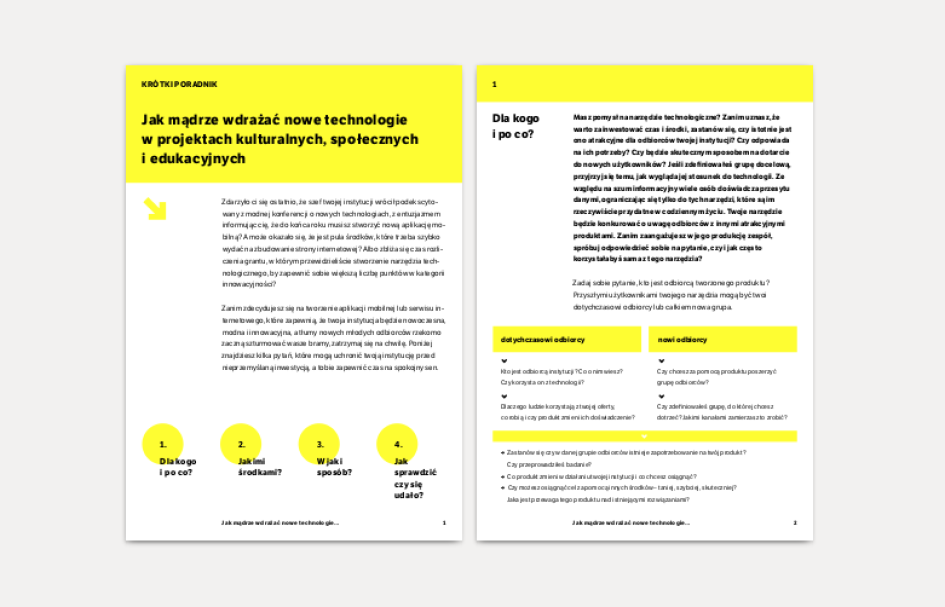A brief guide to sensible implementation of new technologies in cultural, social and educational projects
Recent years have seen a dynamic increase in the range of tools created and developed by cultural institutions and NGOs. Not surprisingly, a marked enthusiasm for the potential of new technologies could clearly be felt during conferences targeted at operators of cultural, educational and social services.
At the same time, however, download figures for mobile apps created by e.g. Polish museums are very modest indeed. Obviously, this is not be taken as a sign of dwindling faith in the great potential and reach of digital tools. Some raise the argument that the general public are not ready for these products yet. However, social practices seem to deny such claims, as millions of Poles enjoy using mobile devices, applications and social networking sites.
An increasingly vital question, therefore, is whether public institutions should put significant funding and resources into creating new technological solutions, especially that these reach a relatively small group of users? “A brief guide to sensible implementation of new technologies in cultural, social and educational projects” may help decision makers consider the practicality of creating such new tools.
In those cases where technologies are indeed the best way of achieving the intended purpose, the guide will help choose the most efficient way to implement them. The intended beneficiaries of the guide are all those organisations and institutions which are looking to incorporate e.g. mobile applications, websites, games, and other similar solutions into their projects.
The guide was created during a meeting of the RemiksLab workgroup held in Katowice on 19–20 September 2015. The guide is available in Polish only.
